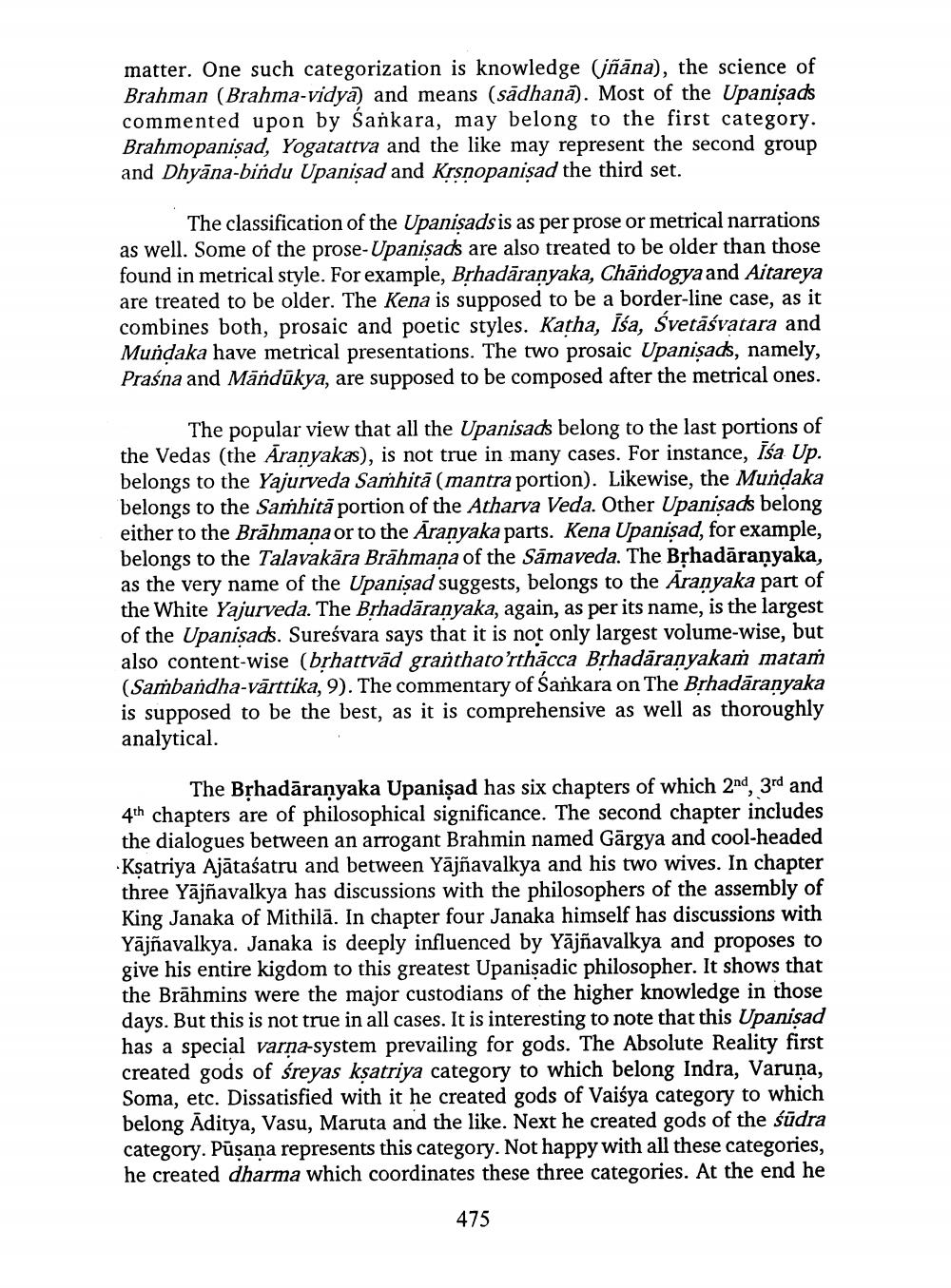________________
matter. One such categorization is knowledge (jñāna), the science of Brahman (Brahma-vidya) and means (sādhana). Most of the Upanisads commented upon by Sankara, may belong to the first category. Brahmopanişad, Yogatattva and the like may represent the second group and Dhyana-bindu Upanisad and Krsnopanisad the third set.
The classification of the Upanisads is as per prose or metrical narrations as well. Some of the prose-Upanisads are also treated to be older than those found in metrical style. For example, Brhadāranyaka, Chándogya and Aitareya are treated to be older. The Kena is supposed to be a border-line case, as it combines both, prosaic and poetic styles. Katha, iśa, Svetāśvatara and Mundaka have metrical presentations. The two prosaic Upanişads, namely, Praśna and Mandukya, are supposed to be composed after the metrical ones.
The popular view that all the Upanisads belong to the last portions of the Vedas (the Aranyakas), is not true in many cases. For instance, Isa Up. belongs to the Yajurveda Samhitā (mantra portion). Likewise, the Mundaka belongs to the Samhită portion of the Atharva Veda. Other Upanisads belong either to the Brāhmana or to the Aranyaka parts. Kena Upanisad, for example, belongs to the Talavakāra Brāhmana of the Sámaveda. The Brhadāranyaka, as the very name of the Upanişad suggests, belongs to the Aranyaka part of the White Yajurveda. The Brhadāranyaka, again, as per its name, is the largest of the Upanisads. Sureśvara says that it is not only largest volume-wise, but also content-wise (brhattvād granthato'rthäcca Brhadaranyakaṁ matam (Saṁbandha-vārttika, 9). The commentary of Sankara on The Brhadaranyaka is supposed to be the best, as it is comprehensive as well as thoroughly analytical.
The Bșhadāranyaka Upanişad has six chapters of which 2nd, 3rd and 4th chapters are of philosophical significance. The second chapter includes the dialogues between an arrogant Brahmin named Gārgya and cool-headed Ksatriya Ajātaśatru and between Yajñavalkya and his two wives. In chapter three Yājsavalkya has discussions with the philosophers of the assembly of King Janaka of Mithilā. In chapter four Janaka himself has discussions with Yājñavalkya. Janaka is deeply influenced by Yājñavalkya and proposes to give his entire kigdom to this greatest Upanisadic philosopher. It shows that the Brāhmins were the major custodians of the higher knowledge in those days. But this is not true in all cases. It is interesting to note that this Upanisad has a special varna-system prevailing for gods. The Absolute Reality first created gods of śreyas ksatriya category to which belong Indra, Varuna, Soma, etc. Dissatisfied with it he created gods of Vaisya category to which belong Aditya, Vasu, Maruta and the like. Next he created gods of the sūdra category. Pūşaņa represents this category. Not happy with all these categories, he created dharma which coordinates these three categories. At the end he
475




